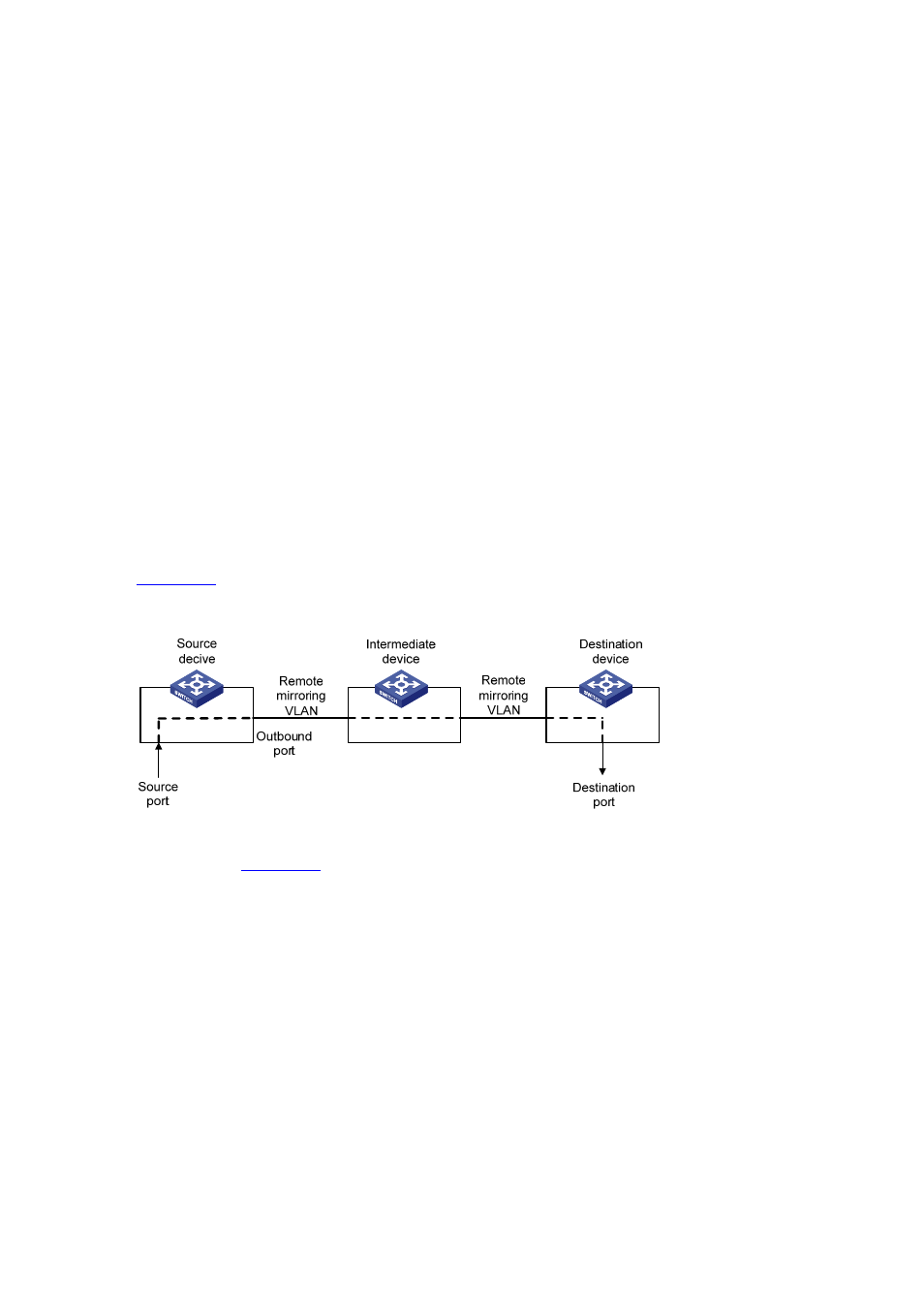Implementing port mirroring, Local port mirroring, Remote port mirroring – H3C Technologies H3C WX6000 Series Access Controllers User Manual
Page 458

50-2
z
Local port mirroring copies packets passing through one or more ports (known as source ports) of
a device to the monitor port (also destination port) for analysis and monitoring purpose. In this case,
the source ports and the destination port are located on the same device.
z
Remote port mirroring implements port mirroring between multiple devices. That is, the source
ports and the destination port can be located on different devices in a network. Currently, remote
port mirroring can only be implemented on Layer 2.
Implementing Port Mirroring
Port mirroring is implemented through port mirroring groups, which fall into these three categories: local
port mirroring group, remote source port mirroring group, and remote destination port mirroring group.
Two port mirroring implementation modes are introduced in the following section.
Local port mirroring
Local port mirroring is implemented by local port mirroring group.
In this mode, the source ports and the destination port are in the same local port mirroring group.
Packets passing through the source ports are duplicated and then forwarded to the destination port.
Remote port mirroring
Remote port mirroring is achieved through the cooperation of remote source port mirroring group and
remote destination port mirroring group.
illustrates a remote port mirroring implementation.
Figure 50-2
A remote mirroring implementation
The devices in
function as follows:
z
Source device
Source device contains source mirroring ports, and remote source port mirroring groups are created on
source devices. A source device duplicates the packets passing the source ports on it and sends them
to the outbound port. The packets are then broadcast in the remote mirroring VLAN and are received by
the intermediate device or destination device.
z
Intermediate device
Intermediate devices are used to connect source devices and destination devices. An intermediate
device forwards the mirrored packets to the next intermediate device or the destination device. If the
source device is directly connected to the destination device, no intermediate device is needed. In a
remote mirroring VLAN, the source devices and the destination device need to be able to communicate
with one another on Layer 2.
z
Destination device